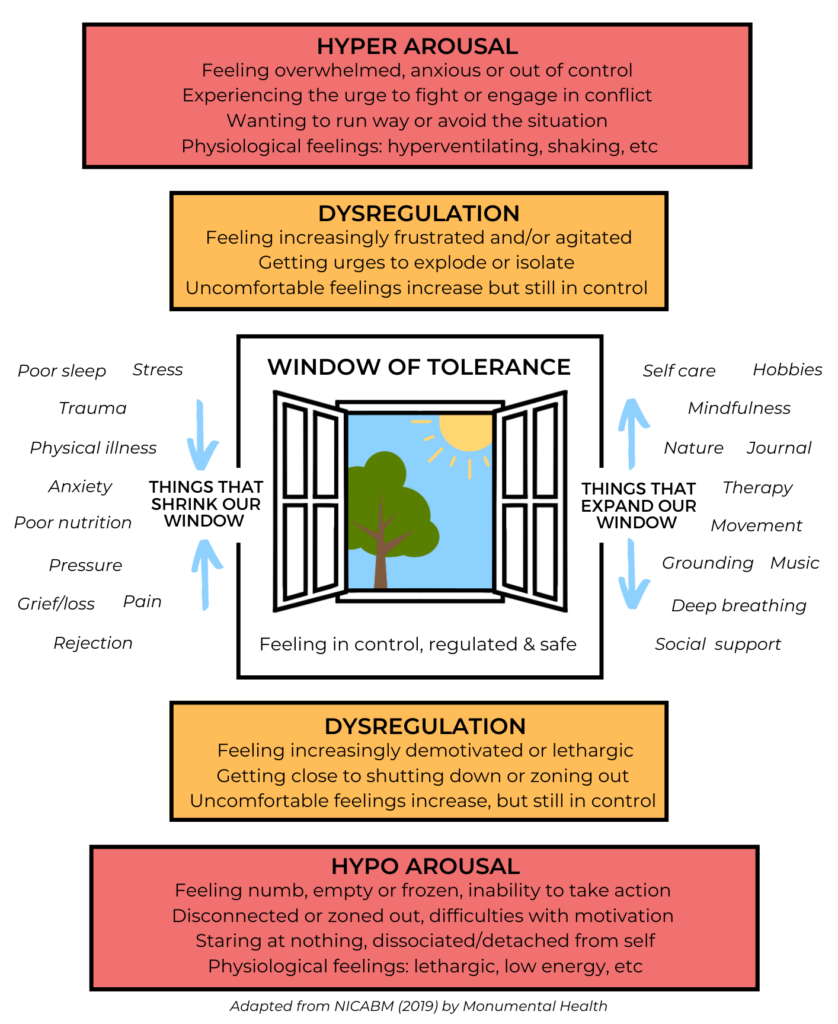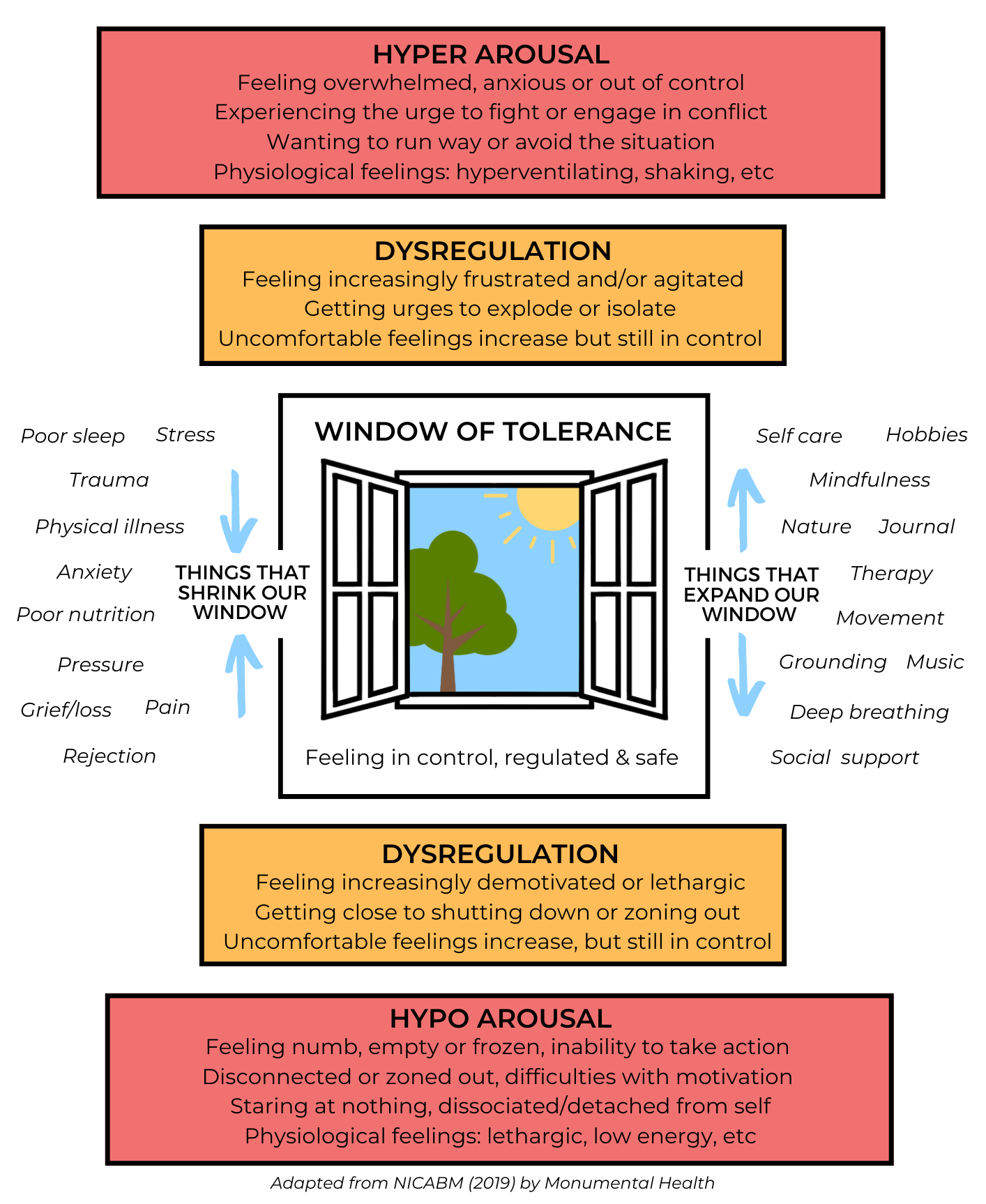If stress has you stuck in fight, flight, or freeze, your nervous system might be outside its window of tolerance. Here’s how to come back into balance.
Thursday morning didn’t start out unusually, but by 10 a.m., I could feel it. My heart was racing. My thoughts were scattered. I couldn’t concentrate on the task in front of me. I had read the news. I’d checked my phone too many times. I told myself to do yoga, to breathe deeply, to just calm down—but nothing was working. So I did what I could: I moved. I walked. I showed up to Pilates because I’m less likely to give up when others are around. And I kept showing up, one small nervous-system-soothing action at a time. Eventually, I was back in my window of tolerance.
Today, I feel better. But if I’m honest, the anxiety hasn’t fully left.
Looking back, I can see the difference it makes when I manage my stress proactively. If I’d made my breathing practice a daily event—or resisted the urge to cancel Pilates—I might handle tension better. I would remember: this feeling is an option. Not a preferred one, but a manageable one.
When I manage stress intentionally, I am aware of my baseline. I can identify where my window of tolerance is—when I’m within it, and when I’ve slipped above or below. And once I notice that, I can begin to take steps to come back into balance.

So, what is this “window of tolerance?” you ask?
The “Window of Tolerance” is a term coined by Dr. Dan Siegel. It helps us understand our brain and body’s normal reactions to stress, especially after adversity. Think of it as your nervous system’s comfort zone.
When we’re inside our window, we’re in what’s called the Optimal Zone. Our nervous system is in balance. We’re calm, yet alert and engaged. We can think clearly, communicate well, handle life’s challenges, and recover when things go off track.
But stress shrinks that window.
Too much stress—or the lingering effects of trauma—can push us outside of it. We either become hyper-aroused (think: anxiety, rage, panic) or hypo-aroused (think: shutdown, numbness, hopelessness). These responses are ancient survival mechanisms, deeply rooted in our biology. And when we’re outside the window, learning, listening, or even thinking clearly becomes incredibly hard.
If you’ve experienced repeated or toxic stress, your nervous system may be “stuck” in one of these extremes. You may find it hard to stay calm or get motivated, not because you’re doing anything wrong—but because your system is still in survival mode.
So how do we bring ourselves back into the window? How do we tone the nervous system like we tone a muscle?
Just like cardio strengthens your heart and strength training builds your muscles, deep breathing tones your nervous system. Mindful movement, regular rest, social connection, and somatic practices all help.
Be gentle with yourself. Be patient. This is a practice.
For now, start with something simple:
- Set your time for 3 minutes and take a few deep breaths.
- Wiggle your toes and feel your feet on the ground.
Start toning your nervous system. Give yourself a regulated nervous system, one conscious breath at a time.

Comment on this post